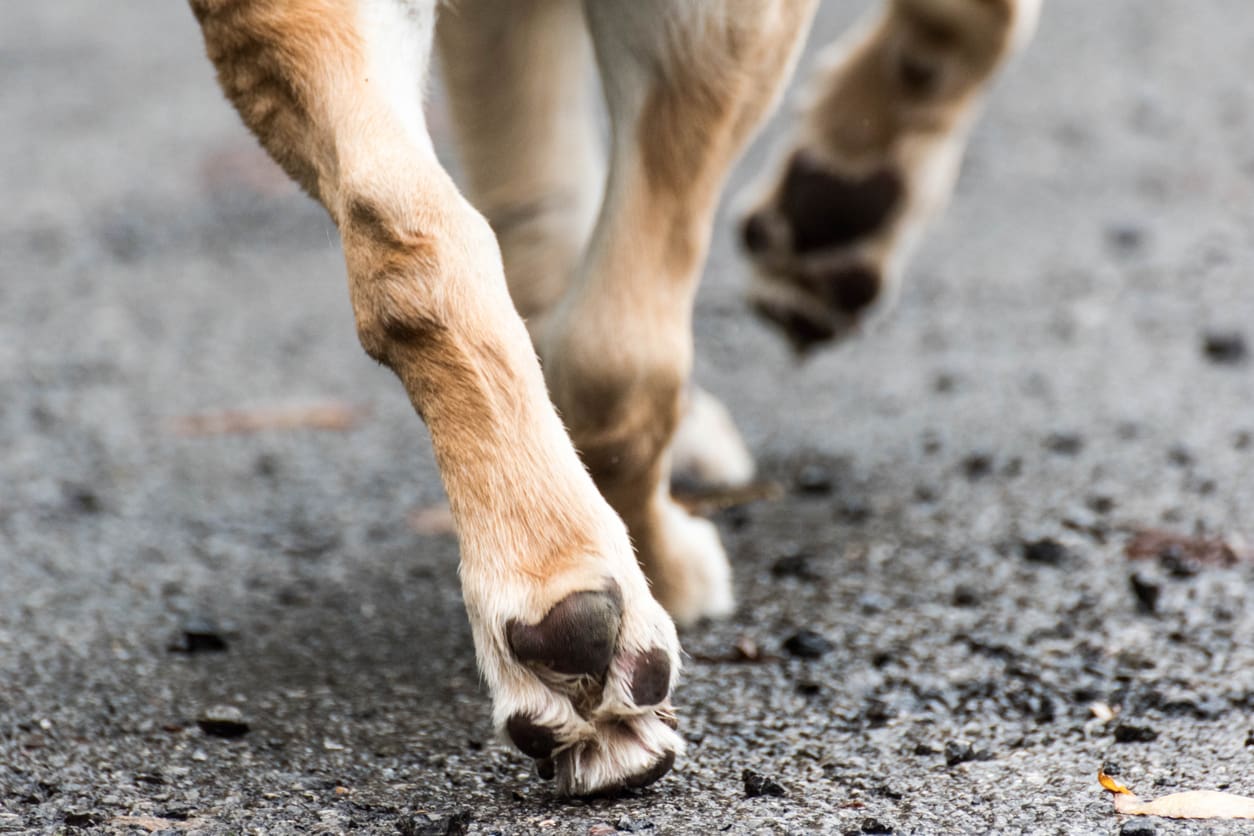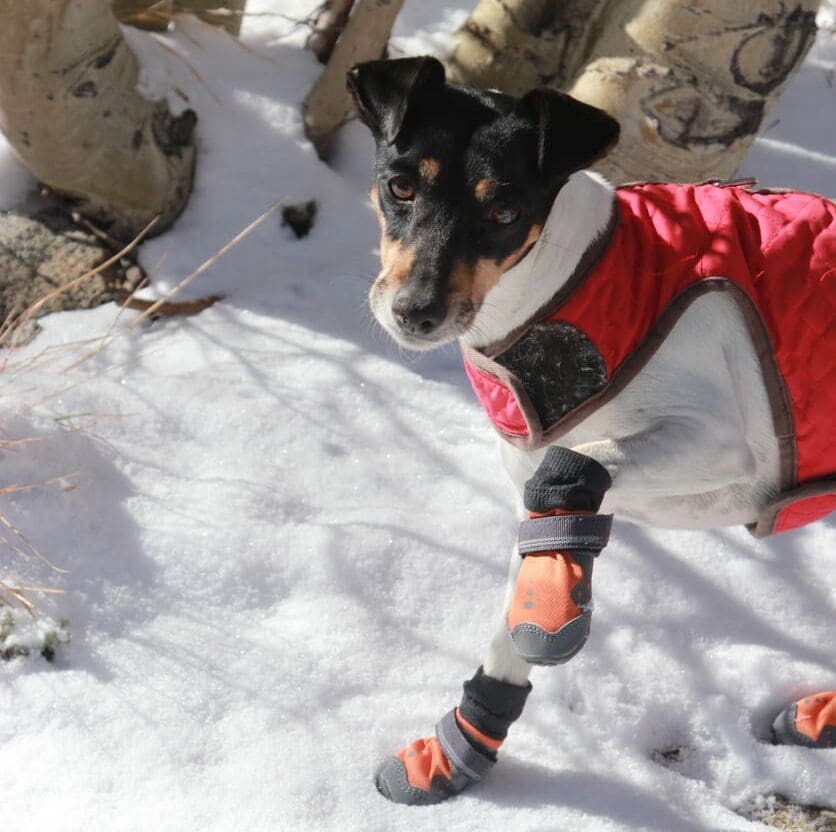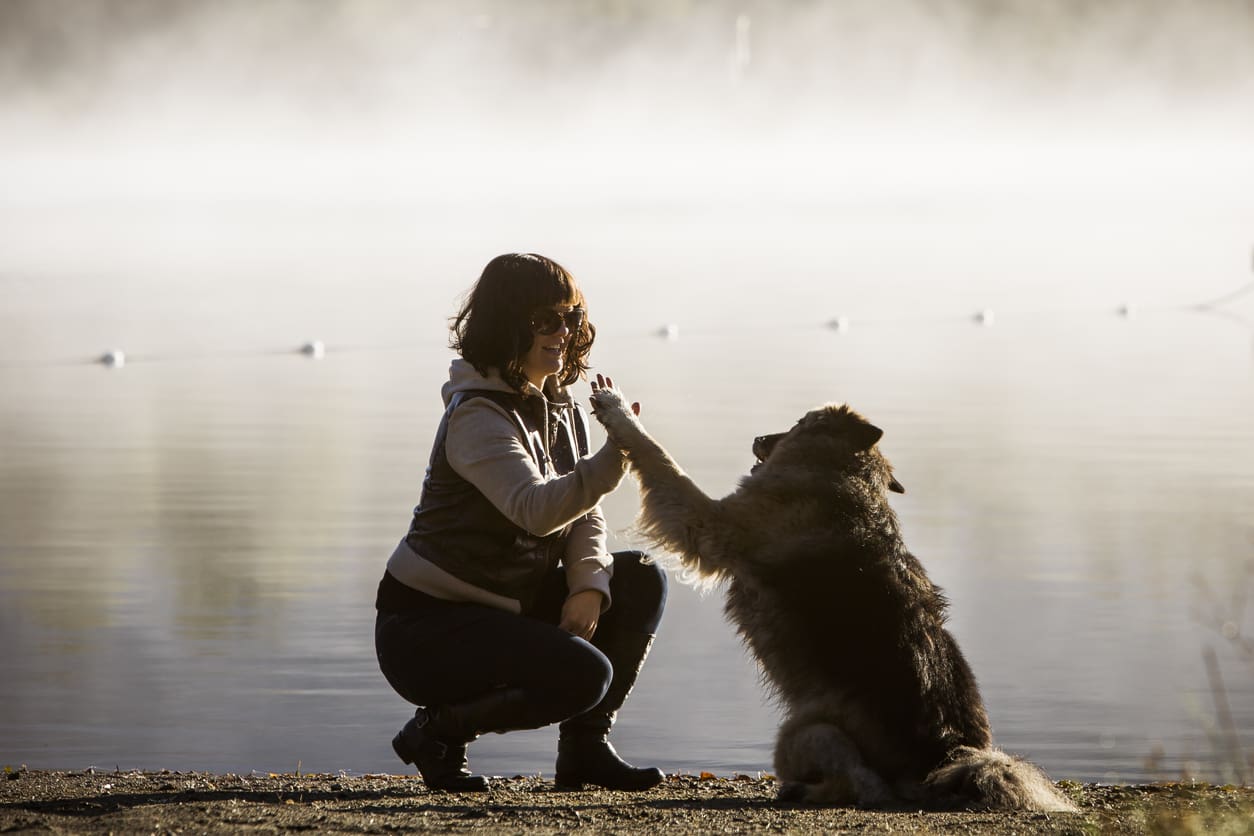
Soothe, Cleanse, and Protect Your Dog’s Paws After a Day on the Water
A day at the lake is a blast for you and your dog, but what happens after all the splashing, swimming, and shoreline running? Your dog’s paws take a beating from hot pavement, rough terrain, salt, and sand. Caring for dog paws after outdoor activities is essential to maintain their health and comfort. A simple DIY paw soak can help soothe irritated paws, clean out debris, and prevent cracked paw pads.
Sometimes, dog paws can develop a smell similar to corn chips due to bacteria or yeast. This odor indicates that it's time to inspect and maintain paw health to prevent possible infections.
Why Post-Lake Paw Pads Care Matters

Whether your dog is swimming, sprinting through trails, or digging in the sand, their dog's paws and feet take a beating. Many dogs are prone to irritated paws, especially after exposure to harmful chemicals, rough surfaces, or icy conditions. Dogs’ paw pads are tough, but they’re not invincible.
Just like humans, dogs sweat through their feet, and their paws are often in contact with allergens or foreign objects that can lead to excessive licking, skin irritation, or even infection. Allergy is a common cause of paw discomfort and can lead to issues like hot spots. Some pets may compulsively lick their paws or feet, worsening irritation. Foot baths after outdoor adventures are an easy way to prevent long-term damage and support healthy paws. Using antibacterial solutions in these soaks can help prevent infection and support paw health. Some natural remedies have shown promising results in soothing hot spots and allergy-related irritation. If issues are not treated, they can worsen and may require attention from veterinarians.
Understanding Paw Anatomy

Your dog’s paws are more than just adorable—they’re complex structures designed to support every step, jump, and splash. At the heart of each paw are the paw pads, which comprise a thick layer of pigmented skin covering a cushion of fatty tissue. This unique combination acts as natural insulation, helping protect your dog’s feet from icy sidewalks in winter and scorching hot pavement in summer.
Paw pads work hand-in-hand with your dog’s nails, providing stability and shock absorption on all terrains. If your pup loves to walk or run on rough surfaces, you might notice their paw pads becoming more calloused and textured, while dogs who stick to smooth floors tend to have softer pads. No matter the texture, healthy paws are essential for your dog’s comfort and mobility.
Did you know that dogs sweat through their paw pads? This is one of the main ways they regulate body heat, making paw health crucial for keeping your dog cool and comfortable. When paw pads become dry or cracked, it can lead to pain, limping, or even more serious issues if left untreated. That’s why regular care—like gentle cleaning, moisturizing, and checking for injuries—is so critical to treat and prevent cracked paw pads, ensuring your dog’s feet stay in top shape for every adventure.
Preparing for a Paw Soak

Before you start your dog’s paw soak, a little preparation goes a long way in making the experience soothing and effective. Begin by carefully inspecting your dog’s paws for any foreign objects, such as small stones, burrs, or splinters, that might be hiding between the pads or toes. If you spot any mats or tangles in the hair around the pads, gently trim them to prevent discomfort and make cleaning easier.
Give your dog’s paws a quick wipe to remove surface dirt and debris—this helps the warm water soak reach every nook and cranny. Using warm water, not hot, will help relax your pup and make the soak feel like a treat rather than a chore. For an extra boost, consider adding natural remedies like cooled tea bags to the soak; these can help soothe irritated skin and promote healthy paws.
If your dog is active on hot pavement, icy sidewalks, or snowy trails, dog booties are a great way to protect their paws before and after soaks. Regular paw soaks and protective gear can help prevent infection and keep your dog’s pads in excellent condition. And if you ever notice anything unusual—like persistent redness, swelling, or limping—don’t hesitate to consult your veterinarian for advice on the best way to protect and treat your dog’s paws.
Before each paw soak, these steps will help ensure your dog’s feet stay clean, comfortable, and ready for whatever adventure comes next.
DIY Paw Soak Recipe for Dogs
A basic DIY paw soak is an easy and natural remedy you can make at home with just a few ingredients. This paw soak is beneficial after walking on rough terrain or hot pavement, as it helps clean and soothe your dog's paws and nails.
Ingredients:
- 1–2 cups of warm water (not hot)
- 1 tablespoon Epsom salts
- 1 teaspoon baking soda (optional)
- A few drops of dog-safe CBD oil or paw balm (optional)
- Optional additions: cooled tea bags or a splash of hydrogen peroxide (if recommended by your vet)
- If using an iodine solution, add enough to make the water the color of iced tea for proper effectiveness.
Instructions:
- Fill a shallow basin or tub with warm water and dissolve the Epsom salts.
- Let your pup stand in the soak for 2–5 minutes. If your dog is unsure, you can do one paw at a time.
- Use a soft cloth or sponge to gently wipe the pads, dog’s toes, nails, and nail beds.
- Pat dry with a clean towel, ensuring the paws are completely dry. If the paws are dry or cracked, apply paw balm.
Tip: If your dog licks their feet frequently, choose non-toxic, vet-approved ingredients to avoid harmful reactions.
Tip: Trim your dog's nails and paws to prevent matting and discomfort and to promote better traction, especially on slippery surfaces.
Tip: Offer treats during the soak to keep your dog calm and cooperative.
Tip: After the soak, have your dog wear booties when walking on rough or hot surfaces to protect their paws and nails.
When to Use a Paw Soak

- After long lake days with exposure to salt, mud, and rough terrain, your dog's paw pads may become irritated, just like other dogs who experience similar activities.
- During summer heat or walks on hot pavement, your pup's paws can suffer burns or discomfort.
- After winter, exposure to snow or icy conditions and ice and cold weather can cause buildup between your dog's paw pads, leading to discomfort or injury.
- If your pup constantly licks or shows signs of cracked paws or canine hyperkeratosis, check the fur between the pads and toes for irritation or matting.
- When your dog’s paws pick up allergens or irritants that could lead to an allergic reaction, your pup's paws may need extra care.
Seasonal allergies and food allergies can also manifest through paw irritation. A paw soak can help reduce inflammation and clean out allergens from the skin and the dog's paw pads. Buildup of fur between the dog's paw pads can also contribute to discomfort, so regular inspection and care are essential for your pup's paws.
Extra Tips for Paw Protection with Dog Booties

- Inspect your pet's paws regularly for signs of dryness, cracks, or injury, and trim your dog’s nails and paws’ hair to reduce matting and debris buildup.
- Keep dog booties on hand for hikes or walking on hot pavement and rough surfaces to protect your dog's paws from injury.
- Apply paw balm before and after outdoor adventures to care for your dog's skin and pads, ensuring they stay healthy and moisturized.
- Always check your dog's paws for foreign objects, signs of infection, or changes in skin condition. Consult your vet if anything seems off.
- Protecting your pets during outdoor walking activities is essential to prevent injuries and keep them safe.
Making Paw Care Part of Your Routine

Regular paw care is key to keeping your dog active, healthy, and happy. Any injuries or irritations to your dog's paws should be treated promptly to prevent complications. Most dogs benefit from weekly soaks, especially during the warmer months when allergens and lake water can cause more frequent issues. Regular attention to your dog's paw health is significant for dogs who are walking frequently on various surfaces. For dog owners, incorporating a foot bath into your post-adventure routine is one of the best ways to treat your pup and show you care.
Your pet’s paws do a lot of work. Caring for your dog's paws is essential to overall pet health. Give them the TLC they deserve after every adventure—and your dog will thank you with plenty of tail wags and happy steps. Regular paw care benefits all pets, helping to keep them safe and comfortable during their daily activities.
Frequently Asked Questions
About K9 Conquest

K9 Conquest is your source for ideas, tips, and products to make your outdoor adventures with your dog safer, more fun, and more effortless. Subscribe to our newsletter to get more tips as we write about these ideas.
